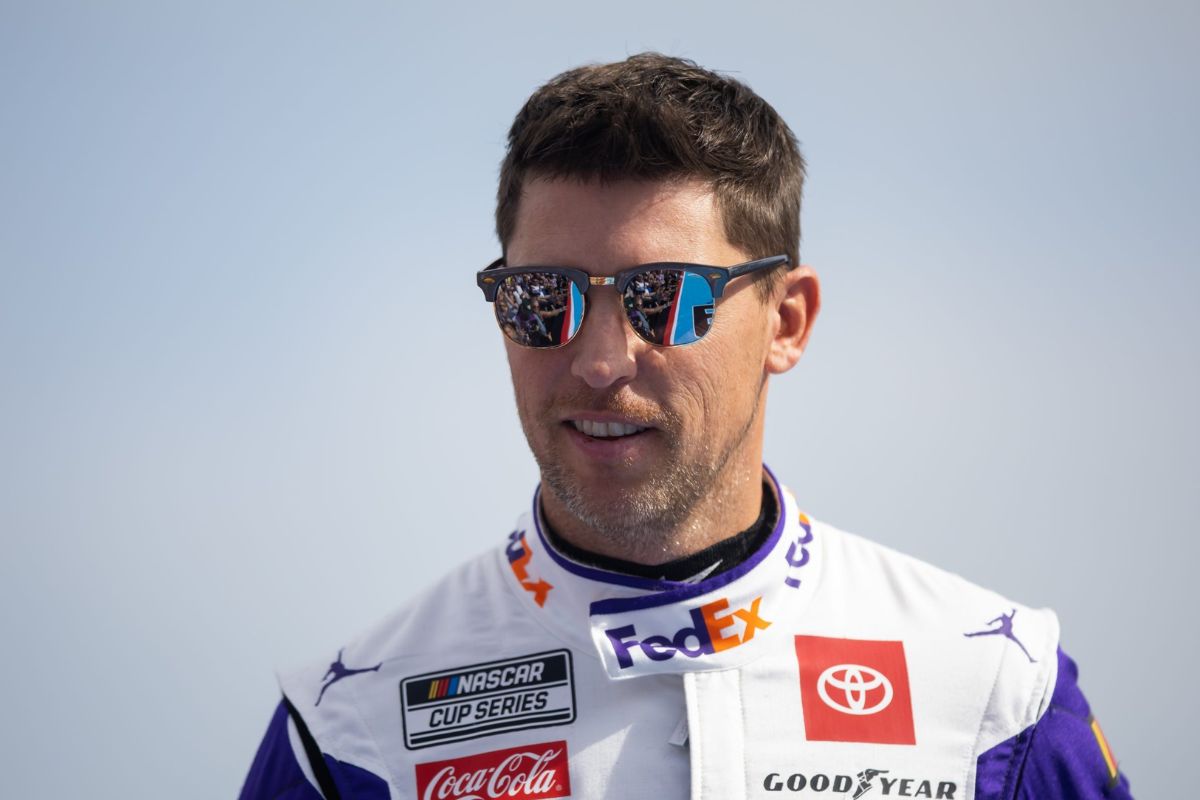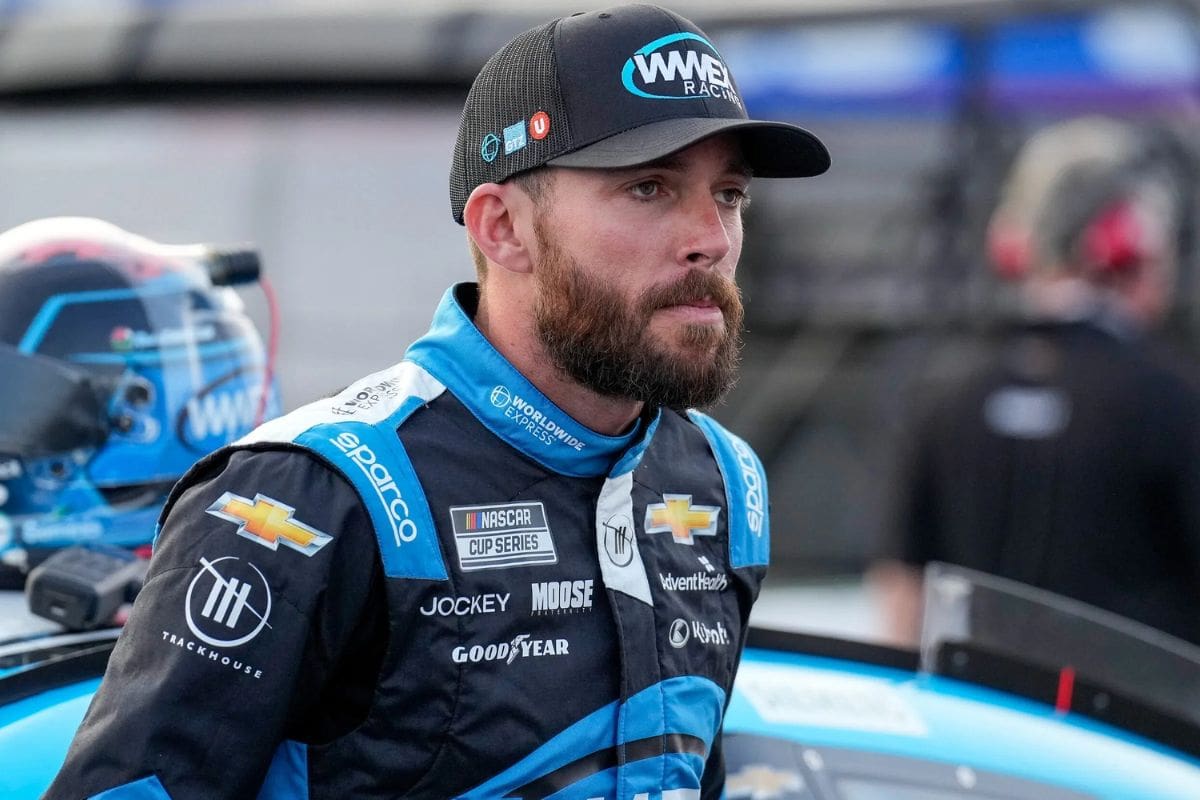Denny Hamlin’s Gesture Shut Down: In a recent NASCAR event, Denny Hamlin‘s gesture of sportsmanship—intended to acknowledge Austin Hill‘s role in a pit road incident—was conspicuously dismissed by his crew chief, illustrating the intense pressure and heightened focus that define professional racing. This incident, occurring amidst the heated dynamics of competition, raises pertinent questions about the balance between personal accountability and team strategy in such situations. The crew chief’s reaction not only highlights the often-understated role of race strategists but also invites a closer examination of the intricate relationships and decision-making processes within top-tier motorsports teams.
Key Takeaways
- Denny Hamlin made a gesture on pit road which was disapproved by his crew chief.
- The crew chief emphasized maintaining professionalism and focus during the race.
- Hamlin’s gesture was likely a response to frustrations experienced on pit road.
- The crew chief’s shutdown of the gesture aimed to prevent further on-track conflicts.
- This incident reflects the team’s strategy to manage emotions and maintain race discipline.
Pit Road Frustrations
The incident on pit road during the AdventHealth 400, where Denny Hamlin lost significant ground due to an obstructive action from Austin Hill, has sparked notable frustration within Hamlin’s team. This moment of disagreement greatly impacted the race dynamics, particularly for Hamlin who had just secured a win in Stage 1. The obstruction occurred during a critical shift off the pit road, a point known for its potential to drastically alter race standings. Hamlin, in his #11 car, was impeded by Hill’s #30, which compromised his previously advantageous position.
Hamlin’s response to the incident was a mixture of self-reproach and subdued frustration. His communication via the team radio, admitting a partial responsibility for the mishap by overshooting his pit stop (“That’s partially on me for going long”), showcases his professionalism and willingness to acknowledge his own errors. However, this self-critical view was not fully shared by his crew chief, Chris Gabehart, who expressed a clear frustration towards Hill’s lack of courtesy on the track.
"We always got to be better but, you know, it would be nice to have a little courtesy… you were clear by about 8 inches" –@dennyhamlin radio after he struggled to get around Austin Hill on his stop
Chastain beats Larson off pit road ahead of him.#NASCAR #AdventHealth400
— Tom Bowles (@NASCARBowles) May 5, 2024
His reference to Hamlin being clear by about 8 inches indicates a precise awareness of the spatial dynamics at play, emphasizing how critical every inch is in a NASCAR race. This incident not only shows the tensions that can flare up in the heat of competition but also the intricate ballet of pit road strategy where mere inches can dictate the outcome of a race.
Ross Chastain Takes Advantage
Amidst the chaos on pit road, Ross Chastain capitalized on the momentary setback faced by Denny Hamlin to surge into the lead. This strategic move not only exemplified Chastain’s opportunistic racing style but also highlighted the significant risks and rapid pace that define NASCAR events. As Hamlin’s #11 crew encountered an unexpected hiccup, Chastain’s adept response emphasized his acute awareness and readiness to exploit any opening.
This incident on pit road provided a clear example of how critical moments outside the traditional racing lines can influence the dynamics of a race. While Hamlin’s team grappled with the repercussions of the intervention by their crew chief, Chastain and his crew executed a flawless pit strategy that catapulted them ahead.
This significant change in positions also set the stage for an altered race dynamic, where Chastain now had the dual advantage of track position and a psychological edge. His swift move past the stumbling #11 car demonstrated a keen exploitation of racecraft, turning an adversary’s misfortune into a personal gain.
The Comeback Strategy
Faced with a significant setback, Denny Hamlin and his crew orchestrated a bold strategy during the final stage’s onset, opting to pit for fuel and tires in a calculated risk to reclaim their position in the race. The decision came at a pivotal moment, with the yellow flag raised, providing a perfect window for this gamble. This move was not just about recovery; it was a strategic pivot meant to exploit timing and track position in a race where every moment counts.
- Timing: The yellow flag presented an opportune moment to minimize time lost during the pit stop, as the pace of the race was temporarily slowed.
- Track Position: By pitting early in the stage, Hamlin aimed to overtake competitors who might pit later in the stage, securing a better position as the race progressed.
- Fuel and Tire Advantage: Fresh tires and a full tank of fuel meant that Hamlin could push harder in the subsequent laps, potentially outperforming those on older tires.
Overtime Drama
With the race nearing its end, Denny Hamlin found himself in a precarious position during the overtime, needing to conserve fuel while simultaneously fending off his aggressive competitors. The caution caused by Kyle Busch’s spin brought the field together for an overtime finish, where Hamlin’s crew chief, Gabehart, decided on a strategic two-tire change to keep Hamlin at the forefront during the restart. This critical decision placed Hamlin in a leading but vulnerable position.
As the race resumed, the dynamics at the front of the pack shifted dramatically. Despite the advantage of a leading position, Hamlin faced immediate pressure from Kyle Larson and Chris Buescher. Both competitors, refreshed with better tire conditions and fuel strategies, aggressively pursued the lead. Hamlin, constrained by fuel concerns and the recent tire strategy, struggled to maintain his pace. The tension of the situation was palpable, as each driver pushed their limits in the closing laps of the race.
Ultimately, Hamlin’s efforts to secure a win were overtaken by the sheer pace and preparedness of his rivals. Although he did not secured the victory at Kansas, securing a top-5 finish still provided valuable points, contributing positively to his season’s standings.
Reflections and Future Plans
Reflecting on the recent race, Denny Hamlin acknowledged the importance of strategic adjustments in future races to improve his competitive edge. Analyzing the choices made during the race, he pinpointed specific areas for improvement that could potentially boost his performance and positioning in upcoming competitions.
“Anyway, in hindsight, I would restart on the outside knowing that the 5 was going to split us to first chance he got to go for win. Once he did it killed all the momentum. You get drag going from both sides of the car and I was a parachute. Had a view of a great finish.” – hamlin
Understanding the dynamics of the race, particularly in critical moments like the final restart, Hamlin realized the strategic error in his choice of track position.
- Choice of Lane during Restarts: Opting for the outside lane might provide better momentum and prevent competitors from easily overtaking.
- Pit Stall Selection: Strategic selection of the pit stall could minimize time lost during critical pit stops and improve overall race management.
- Drafting Strategy: Improving understanding and execution of drafting techniques to maintain speed and resist becoming a ‘parachute’ when overtaken.
News in Brief: Denny Hamlin’s Gesture Shut Down
The interaction between Denny Hamlin and his crew chief during a NASCAR race shows the profound level of focus and commitment required in competitive motorsports.
This episode, reflecting on sportsmanship and strategic race focus, highlights the tensions that can arise within a racing team.
It serves as a critical reminder of the complexities involved in team dynamics and the strategic decisions that must be prioritized to optimize performance in high-stakes environments.
ALSO READ: Denny Hamlin’s Historic Run Threatens Harvick’s Legacy





